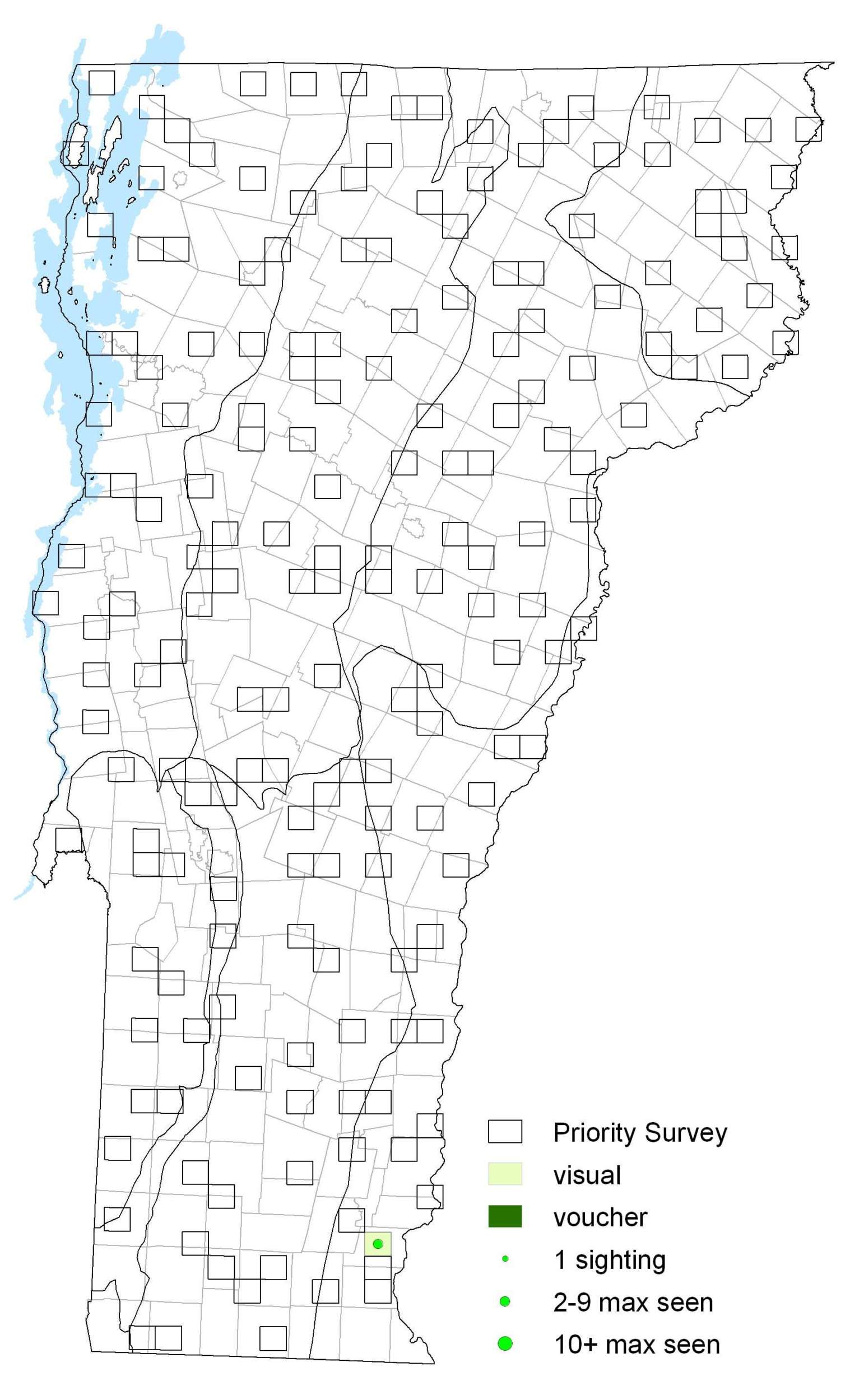|
Resident Conservation Status North American Range |
A specialized hairstreak that is restricted to habitat with its favored hostplant, Scrub Oak (Quercus ilicifolia). Lays eggs in bark crevices of hostplants. Young Larvae feed during the day on the oak buds. As they mature they may also feed on young leaves. Older larvae feed nocturnally. Nearby ant colonies, almost exclusively Formica integra, provide protection for the larvae in exchange for honeydew secretions. Ants build shelters at the base of host trees where the caterpillars rest during the day and escort the caterpillars onto the hostplant to feed at night.
Identification
One tail on the hindwing. Underside of hindwing pale brown, with postmedian band of dark brown oval spots; blue tail-spot not topped with orange.
Flight
In Massachusetts one flight, typically early July to early August. Only one visual record reported during VBS; two individuals seen on 22 July 2005 in Dummerston (S. Harris). There are no historical records known. Until further verification, this species should probably be considered as “hypothetical” in Vermont.
Distribution and Habitat
Scrub oak habitats are extremely limited in Vermont. This butterfly becomes more common southward where its habitat is more widespread, but is often restricted by its need for proximity to certain ant colonies with which its larvae has a symbiotic relationship. Hostplant is Scrub Oak (Quercus ilicifolia). Adults nectar from various flowers including dogbane (Apocynum), goldenrods (Solidago), milkweeds (Asclepias), New Jersey Tea (Ceanothus americanus), Staghorn Sumac (Rhus Typhina), and White Sweet Clover (Melilotus alba).






